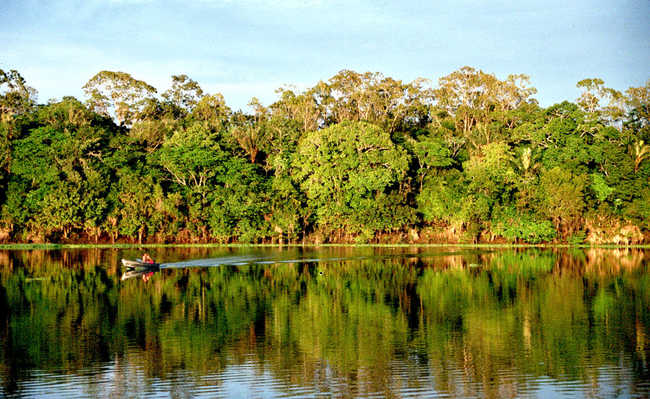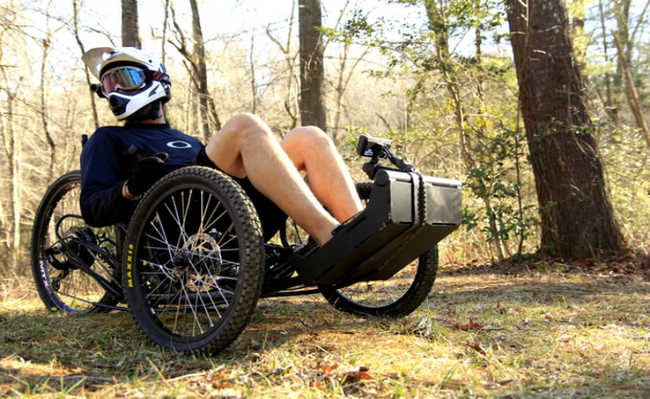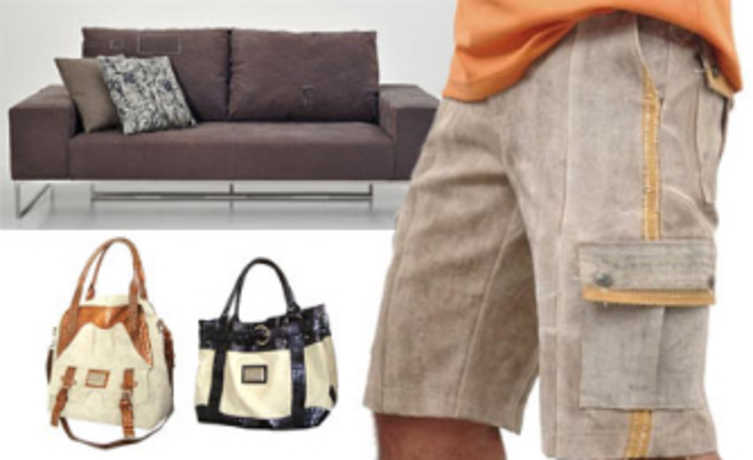Trekking: walking as a way to get to know the environment, recondition the physical and reduce emissions
The art of walking. Take steps towards a healthier and more sustainable future

Have you ever stopped to think that we are all pedestrians? Regardless of your favorite form of travel, every journey starts and ends on foot.
We humans have bodies that have evolved over thousands of years to adapt to the physical activities that wildlife required of us. However, we live in a curious inversion... We developed methods and machines so that we could move less and with more speed, becoming more and more sedentary. A sedentary life can bring several negative consequences, such as a functional return, loss of joint flexibility, increased occurrence of diseases such as high blood pressure, diabetes, obesity, among others. It is absurd to think that we are gradually disassociating ourselves from a basic human activity: walking.
Walking is a pleasant, healthy, cheap, sustainable and efficient locomotion option (even though it is often not the fastest).
What is trekking?
Hiking is the exercise that consists of doing long marches on foot. Sports practice, competitive or not, is often performed in natural environments.
When performed in nature, hiking, mountain walking or Nordic walking (Nordic walking) also offer the benefits of outdoor activity. There is interaction and observation of the environment, leading to knowledge of the local fauna, flora and geology. All of this contributes to raising awareness and promoting respect for nature, rescuing values such as biophilia. Furthermore, studies prove that contact with nature promotes vitality, relieves stress, improves performance and mood, and reduces and reduces the chances of developing mental illnesses.
The activity is multifaceted: it involves sport, tourism and environmentalism. Hiking can be done on unmarked terrain or on itineraries defined as large routes, small routes or local routes. These footpaths are paths normally made in natural and rural environments, which are generally signposted with internationally accepted marks and codes.
Adventure is not only found in the challenge or overcoming difficulties, but also in the simple pleasure of enjoying the path itself. Whether in your own city, state or country, or in a distant location, the routes can lead to landscapes of great beauty, ancient buildings and places with different customs and traditions. The routes can have a recreational, exploratory or adventure nature.
The first pedestrian routes probably arose as a result of the migratory movement of herbivores. Man established them for various purposes, such as the search for food, religious pilgrimages, trade and war.
Hiking is common on traditional or ancient routes, such as indigenous or medieval paths, roads, pilgrimage sites etc. It helps in tourism and preserving the memory of the place.
Walking in the city

But, the walk can also be done in urban areas! Hiking can be done in groups, exploring traditional, tourist and historical points of the city. You can also understand hiking as walking or jogging, quite simply.
Hiking is a great activity for you who want to start a physical activity but don't have much conditioning. It does not involve great technical difficulties and can be practiced at all ages, alone, with family or among friends.
Hiking is a very beneficial practice for your health and the planet! By opting for walking in everyday commuting, you contribute to reducing the emission of harmful gases, getting to know the neighborhood in which you live or work better and, besides, you can also do a physical activity. Walking is also a great way to escape stress and sedentary lifestyle: it's a time when you can get in touch with yourself and reflect.
A good idea is to take advantage of a less crowded day, with a longer lunch break, for example, and take a walk to discover the region's attractions (such as museums, churches, squares or monuments). We often spend every day in front of these places and never even enter. Have you ever stopped to think about it? The daily walk can become less monotonous with some adaptations to the path, even if it makes it a little longer. It's really cool to discover ways to get to frequent destinations traveling through new regions.
However, the streets are not always a pleasant environment for walking: poor sidewalks, lack of security and signage are among some of the problems faced by pedestrians when taking their daily walk. The concept walkability (English term used to define the accessibility of a place for those who walk; something like walkability or walkability) is very interesting to understand this issue from an urban point of view.
For cities to be more human, democratic, sustainable and less exclusionary, they must be designed so that walking is easy and pleasant. Circling with comfort and safety is a right. All pedestrians, including children, the elderly, people with mobility or vision difficulties, must have their mobility in the city guaranteed.
Initiatives that encourage hiking

Several organizations have cool initiatives related to this issue: the “down-to-earth” movement is here to stay. The Como Anda project has so far listed 78 movements for mobility on foot in 16 states in Brazil. These projects are essential to spread awareness that the city is a public space that can, and should, be used by the population. The groups promote mobility initiatives on foot and seek solutions to make cities more accessible to pedestrians. Organizations work with information, education, mobilization and physical intervention in space.
The NGO Cidadeapé is one of these initiatives. It seeks to establish a formal representation before the government to defend the conditions of the city's spaces for those who travel on foot.
The SampaPé collective develops cultural events and walks in the city of São Paulo. With the motto “Peedestres de Sampa, unite!”, the collective created a guide to teach how to report a dangerous sidewalk.
Another very nice organization is Cidade Ativa. She elaborates proposals for physical interventions through urbanism architecture projects and formulates guidelines, strategies and policies that can transform physical spaces and make everyday life in cities more active. The organization's main projects are aimed at mapping and improving the conditions of stairways in São Paulo.
The Urb-i collective has a gallery that shows several examples of cities with images from the Google Street View before and after urban interventions. The images generate a reflection on changes in urban space and the relevance of these measures.
The Hitchhiking program was created in June 2015 and brings together the school community that lives near a school in the central region of São Paulo to travel to and from school in small groups, at a pre-school time. established, with determined route.
Hiking is a healthy activity and an alternative form of transport that helps to reduce harmful emissions. Initiatives that encourage this form of mobility are a political tool to fight for more sustainable and humane cities.
Source: City on foot, Sampapé, FAU - USP










